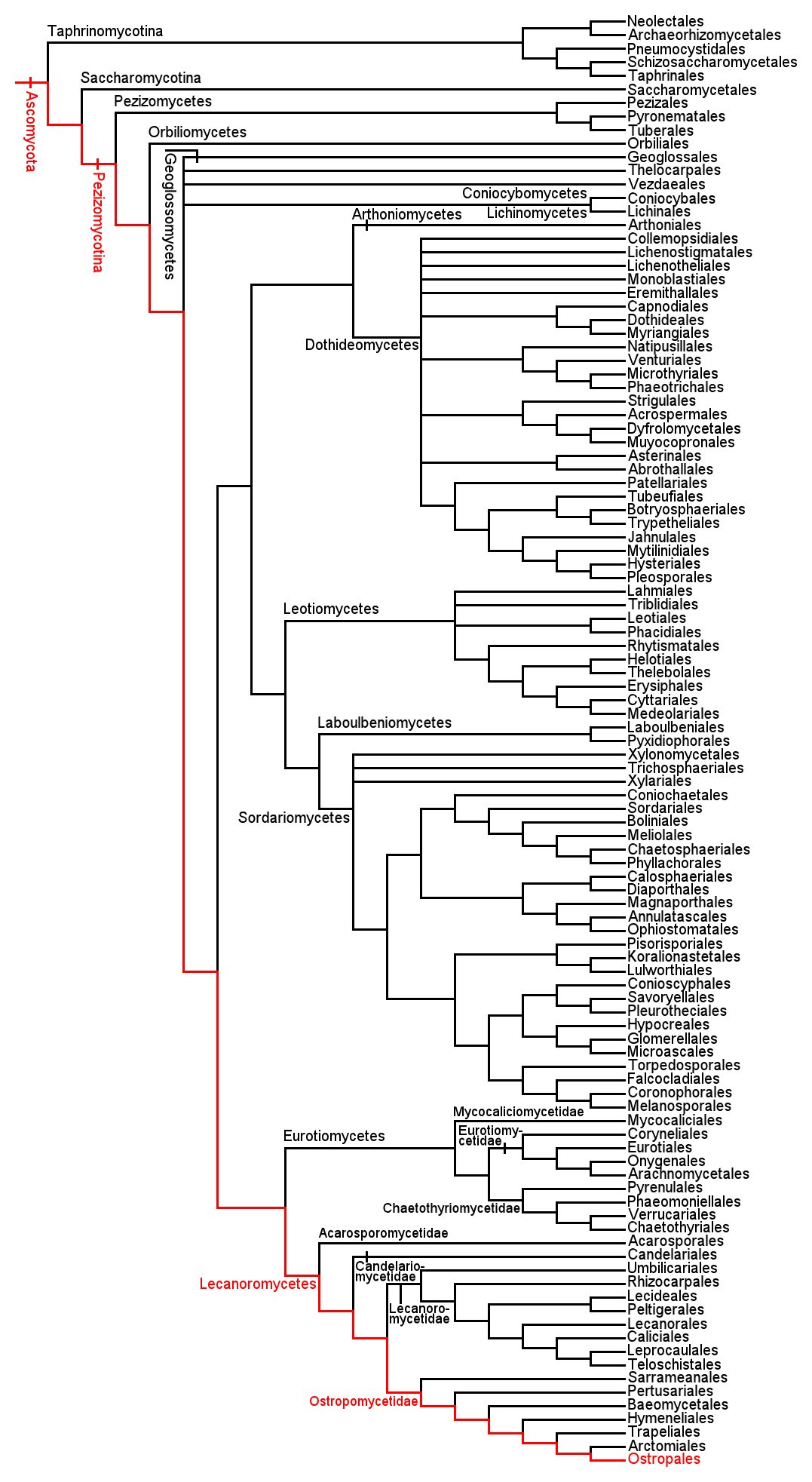Ingvariella Guderley & Lumbsch
in Guderley & al., Nova Hedwigia, 64: 152, 1997.
Systematics:
Phylum: Ascomycota Caval.-Sm.
Subphylum: Pezizomycotina O.E.Erikss. & Winka
Class: Lecanoromycetes O.E.Erikss. & Winka
Subclass: Ostropomycetidae Reeb, Lutzoni & Cl.Roux
Order: Ostropales Nannf.
Family: Stictidaceae Fr.
Brief description: Thallus crustose, episubstratic, rimose-areolate, grey-brown to brown. Apothecia at first almost perithecioid, but soon becoming apothecioid, urceolate, semi-immersed in the areoles, with a concave, black disc and a raised, black margin. Proper exciple substituted by a pseudoparenchymatous pseudoexciple of degenerating, black hymenial elements; epithecium poorly differentiated, colourless to brownish; hymenium colourless; paraphyses simple, flaccid, the apical cells not swollen; hypothecium colourless. Asci (1-)2-spored, cylindrical, with an amyloid wall. Ascospores muriform, at first almost colourless then turning brown, broadly ellipsoid. Photobiont chlorococcoid. Chemistry: without lichen substances.
Note: This monotypic genus was originally segregated from Diploschistes by Guderley & al. (1997), due to the absence of a true exciple, this being replaced by a pseudoexciple of degenerating, pigmented hymenial elements, and was placed in the Thelotremataceae (now part of the Graphidaceae). However, the hymenium and amyloid ascus wall suggest different affinities. The phylogenetic study by Fernandez-Brime & al. (2011) demonstrated that Ingvariella is a member of the Stictidaceae, sister to the mainly saprotrophic genus Cryptodiscus. The genus has a worldwide distribution, but is most common at high elevations in semi-arid regions with winter rain.
Type: Ingvariella bispora (Bagl.) Guderley & Lumbsch


